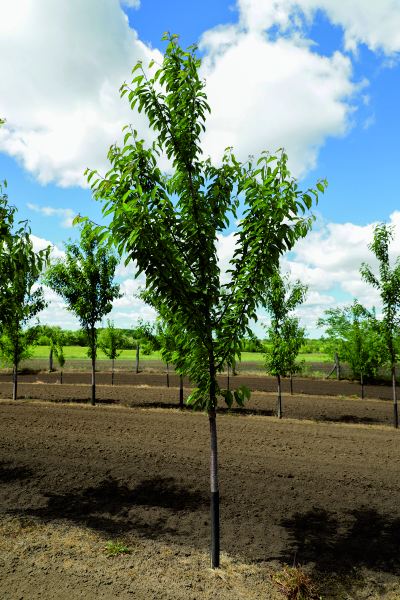THE FUTURE OF THE FOREST BEGINS HERE AND NOW.
Die Vogelkirsche verbindet relativ schnelles Wachstum mit wertvollen Holzeigenschaften, steigert die Artenvielfalt
und trägt zu einem lebendigeren Landschaftsbild bei.


Climate change poses significant challenges to forests, affecting many native tree species. However, one tree species that stands to benefit from rising temperatures is the wild cherry (Prunus avium L.). Naturally distributed throughout Germany, it primarily thrives in the warm regions of hilly and lower mountainous areas. Under previous climate conditions, the wild cherry, as a light-demanding species, was found in small proportions within mixed deciduous and coniferous forests that favor warmth, alongside oak, beech, hornbeam, linden, or pine. Compared to oak and beech, it grows very rapidly until about 40 years of age and produces valuable, aesthetically appealing wood. So far, the wild cherry has demonstrated tolerance to heat and drought.
The long-term preservation of forest functions, such as raw wood production, climate protection, recreation, and nature conservation, is a key goal of forestry in the face of climate change. A crucial aspect in this regard is the carbon storage capacity of forests and their ability to continue meeting the demands of society and the economy at the accustomed level.
The bird cherry is gaining increasing importance in this context. In addition to its economically valuable growth and wood properties, it provides habitat for various beetle and fungal species, food for fruit-eating birds, and nectar for pollinating insects. Thus, the wild cherry makes a significant contribution to biodiversity in forest ecosystems. Its striking spring blossoms and vibrant autumn foliage enhance the landscape, adding an aesthetic value that should not be underestimated.
"We have something to gain if we take decisive action to protect the forests. We must make the forests strong and stable so that they can protect us. Our forests are our most important allies in tackling the climate crisis."
Extract from the keynote speech on forest policy 2023 –
Bundesminister für Ernährung und Landwirtschaft